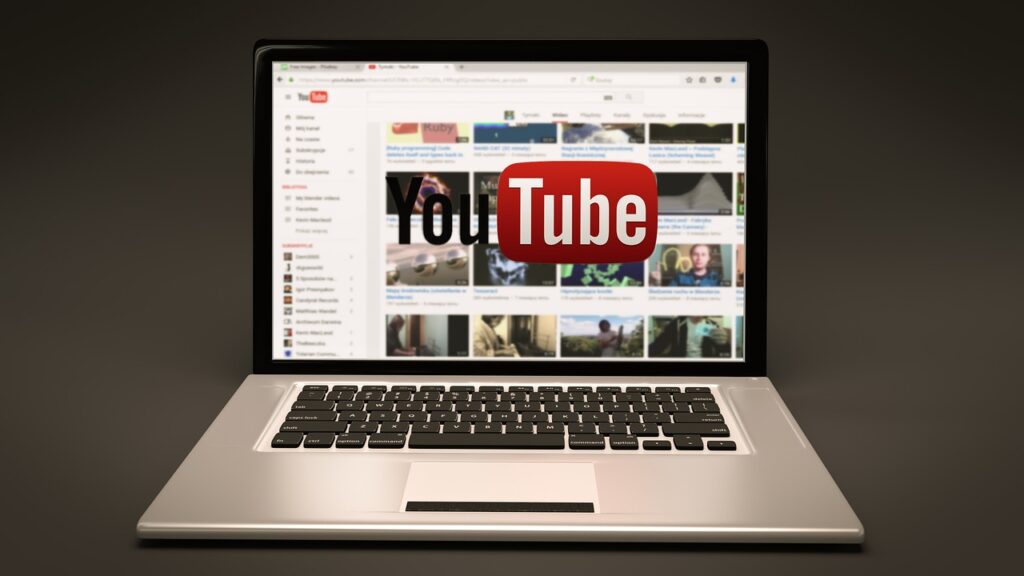Are you hoping to start a therapist YouTube channel? Or do you already have one but are finding it hard to get traction?
I’ll share some tips to help you get your channel off the ground if this is something you’re interested in doing.

How My Channel Began
A little over 4 years ago I started my YouTube channel. And since then, it’s turned into something much bigger than I’d ever hoped for when I got started.
I remember thinking when I first got started: maybe someday several years from now I’ll hit 1,000 subscribers and that would be amazing
But I didn’t make my channel to get subscribers. I wanted to offer helpful tools for folks starting a private practice by sharing from my personal experience. I had found it challenging to find those tools for free when I got started.
And, if I made some money to support my family along the way, that would be a massive bonus.
When I started, there were hardly any other therapists on YouTube in general.
But more recently I’ve noticed an increasing buzz of folks wanting to enter this space, especially for folks who are starting to get burned out on other platforms.
You CAN Start A YouTube Channel!
And yes, ANYONE can do this. Even if you have no tech skills, and even if you have NO idea what your channel will be about.
7 Tips To Start Your Therapist YouTube Channel
1) Identify your “why”.
- Ask yourself: “Why are you wanting to start a therapist YouTube channel?”
- Maybe you are hoping to get more therapy clients. Maybe you’d like to offer some educational tools for free. Maybe it brings you joy to share entertaining therapy-related memes. Maybe you have a course or product you’d like to promote.
- Whatever your “why”, it’s helpful to know what you’re after when starting a YouTube channel, because without knowing your “why”, you’re likely to burn out on posting videos.
- Because, yes, it’s a lot of work! So we need to know our “why” to stay motivated.
- When I started Private Practice Skills, my “why” had a couple of threads. I wanted to put out free access to information I wish I had had about private practice. I also wanted to generate passive income so I could spend the majority of my time with my kids during their early years.
2) Start posting.
- Yes. This is genuinely the next step!
- A lot of folks think you need to buy a bunch of gear, get a website, build out a brand, and do a whole lot of other stuff before ever posting a video. But here’s the deal: When you first start posting videos, no one will watch them. I mean NO ONE.
- I heard Ali Abdaal bring this up in a video about starting a YouTube channel and I thought it was the most helpful thing to hear. Because building an audience on YouTube generally takes a very long time.
- So if you invest all this time and energy (and sometimes money) before ever posting your first video, then when it comes time to post, you’re still going to have NO views. Or if you share it with your friends and networks, then maybe a few views. But you won’t have an audience yet.
- The best teacher on Youtube is your own experience posting. Every time you make a video, you will learn something new, which you’ll implement in the next video. And before you know it, your videos will get better and better over time. And as they start to get better, your audience will start to grow too.
- And if you’re overwhelmed by posting a video, pull out your phone, and take a video of yourself: “Hi, this is my first YouTube video!” Then upload that thing to YouTube. No one will watch it. It’s a weirdly liberating feeling. And if that’s too terrifying, you can post the video as “unlisted” so that means no one will see it.

3) Let your niche develop over time.
- Successful YouTube channels usually have a niche that they focus on. Mine is focused on private practice.
- But I think it’s possible to get so caught up in finding your niche that people never post. Or, once you pick a niche you feel allegiance to stick by it even if you don’t like it anymore or if it’s just not working out.
- Instead, I encourage you to post about whatever you feel like posting about. Don’t worry about your niche when you’re starting. Focus instead on: what video would I most enjoy making?
- Allowing yourself to discover what videos bring you joy to create will set your YouTube channel up for success. Here’s why:
- If you choose something you enjoy to focus on in your videos, they will be intrinsically enjoyable for you to create. This means you will feel motivated to keep making videos because you like what you’re focusing on. You will also be presenting some of the best parts of yourself to the world.
- This creates an opportunity for the land of YouTube viewers to start to tell you what aspects of your interests are most appealing to them.
- To put marketing language to it, this is a critical step to building your brand: It’s the venn diagram of the areas where your own passions and values align with the needs and preferences of your audience.
4) Make more videos related to the ones that are doing well.
- In other words, once you discover where that happy middle of that venn diagram lives, make more content related to that intersection.
- This should work well because we already know that your audience likes it, and we also already know that you like creating this type of content as well.
5) Keep making videos.
- I see many folks pop in and out of YouTube, where they might make a few videos one month and then disappear for 6 months before posting again.
- Though this is an option if you see YouTube as a space primarily to express yourself for fun, if you might be hoping to make an impact or generate revenue, your best bet is to post as consistently as is reasonable. Weekly is a good goal if you can swing it.
6) Prioritize Improvement.
- If you’ve gotten to the point where you’ve posted a couple dozen videos and you’re still in this, now is a great time to start leveling up your YouTube game.
- This is a good time to start learning about how to edit videos, make great titles, and focus on having interesting thumbnails so people will click on your videos.
- You can access a bunch of information for free on how to do so on YouTube, or you can take a class. I’ve taken about 10 courses on YouTube strategy, and my hands-down favorites are Ali Abdaal’s courses: “YouTube for Beginners” and “Video Editing with Final Cut Pro” , which are available through Skillshare. If you’d like to check them out, you can use this link to get a 30-day free trial of skillshare and binge watch all of his tips.
7) Generate Revenue.
- Notice how this comes at the end of this list.
- Let me be clear about something: if you think you will make money quickly from YouTube, you will be extremely let down.
- But, if you keep making great content that aligns with your values and skillset, you will grow and opportunities to generate revenue will emerge.
- I won’t dive into the details of how to do that here since this is an article for folks just starting out. Just know that it will likely be some time before you can monetize your channel.
- For me, it took a year posting weekly videos before I started generating a very small amount of income for my channel.
I hope you found this video helpful if you’re thinking about starting a therapist YouTube channel and you’re not sure where to start.
Did You Know that YouTube Can Help Your Marketing?
If you are dipping your toe into the world of YouTube. I have an article that outlines how therapists can use YouTube to help market their practice.
Until next time, from one therapist to another: I wish you well!
-Marie
Image by Tymon Oziemblewski from Pixabay
Image by Gracini Studios from Pixabay
Leave A Reply